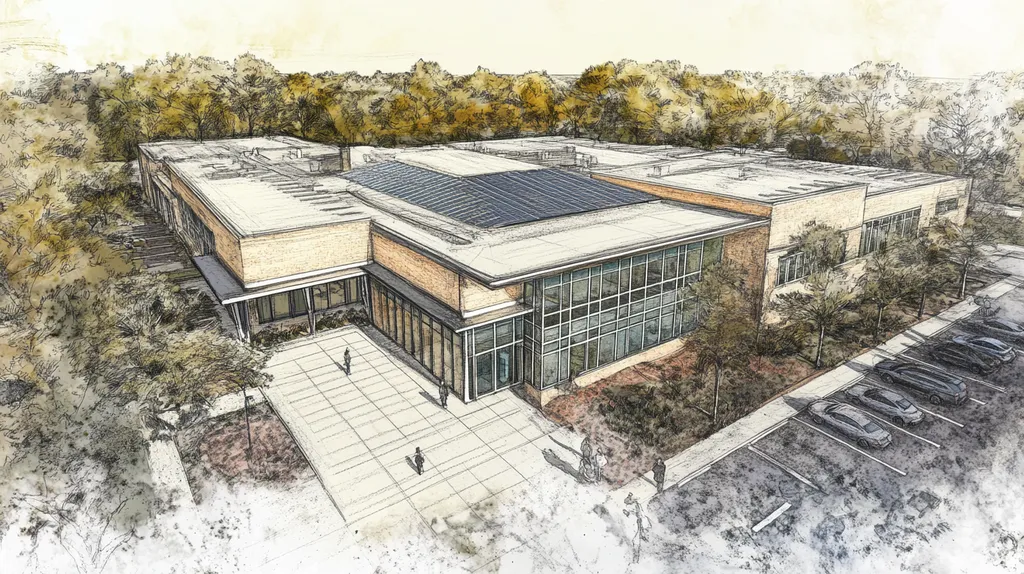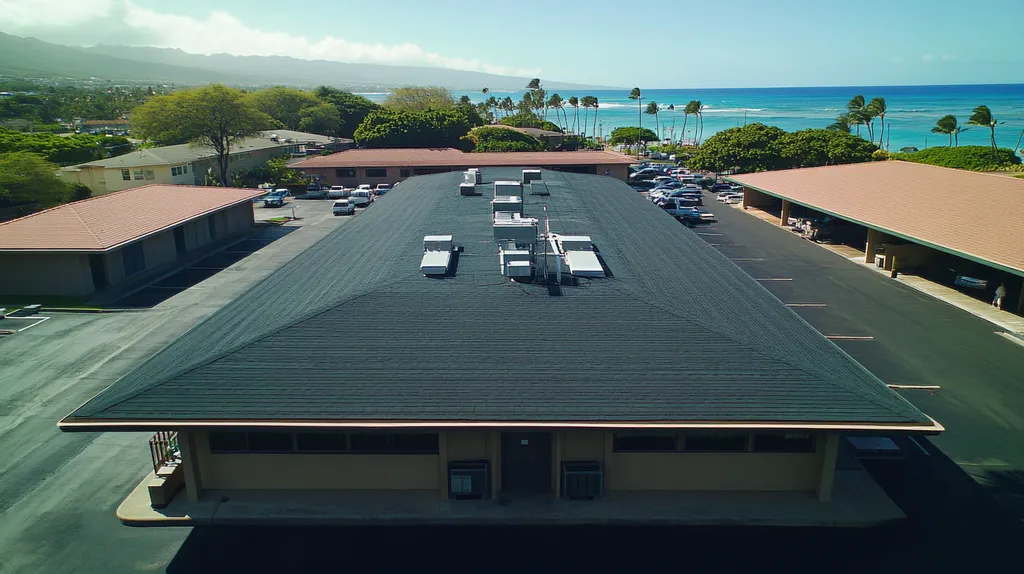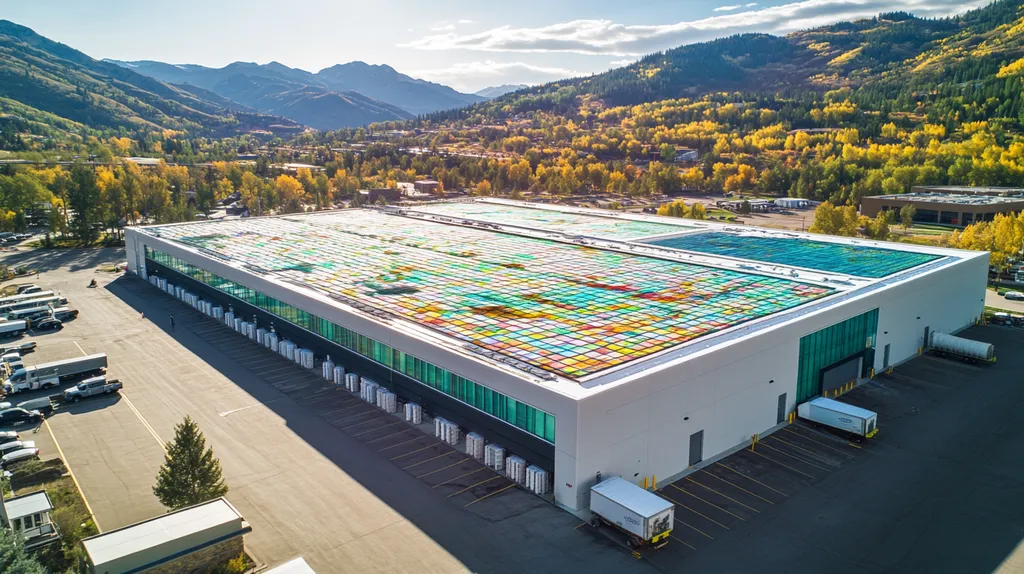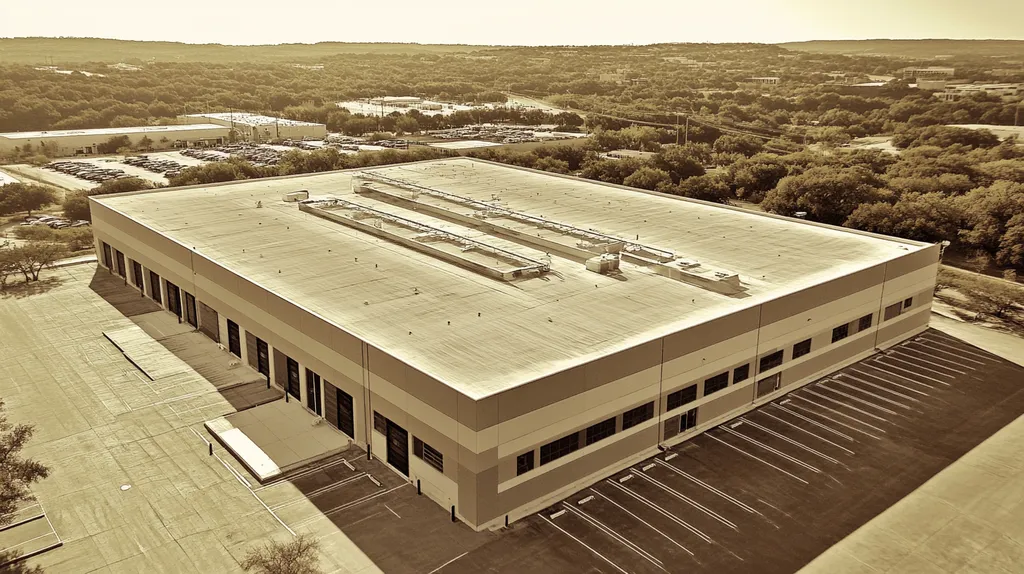Industrial facilities across North America are facing a critical challenge: rising energy costs now consume up to 30% of operational budgets, with cooling expenses representing the largest portion of that spending.
Recent studies show that traditional roofing solutions are creating massive efficiency gaps, with uncoated roofs absorbing up to 95% of solar heat. This absorbed heat translates directly into higher cooling costs and accelerated roof deterioration.
Reflective coatings present a proven solution, offering the potential to reduce roof surface temperatures by up to 50°F while extending roof lifespan by 5-10 years. This comprehensive guide examines the key performance factors, financial implications, compliance requirements, and implementation strategies facility managers need to maximize these benefits.
SECTION 1: PERFORMANCE FACTORS
In today’s competitive landscape, energy efficiency is more critical than ever for industrial facilities. As energy costs continue to climb, property owners risk facing considerable financial strain without proactive measures. Reflective coatings for industrial roofs present an effective and immediate solution, yielding significant energy savings and enhancing overall building performance. This section delves into the vital performance factors that elevate reflective coatings as a key consideration for facility managers.
Heat Reflection and Energy Savings
Reflective coatings improve the roof’s ability to reflect sunlight, preventing excess heat from entering the building. By minimizing solar energy absorption, these coatings can significantly decrease cooling costs, particularly during sweltering summer months. Research highlights that reflective roofs may cut energy consumption by an impressive 30% in specific climates.
The financial implications are profound. An industrial facility can reap thousands of dollars in savings each year through enhanced heat reflection. These reductions not only bolster the bottom line but also strengthen a company’s competitive edge.
Moreover, reflective coatings can prolong the life of roofing materials. By keeping roof surfaces cooler, they alleviate thermal stress, resulting in fewer repairs and replacements. Ultimately, investing in energy-efficient roofing solutions translates to long-term savings.
Key Action Items
Roof Surface Temperature Reduction
Reflective coatings make a noticeable impact on roof surface temperatures, creating a more stable indoor climate. This reduction not only boosts energy efficiency but also enhances the working conditions for employees. A cooler roof can lead to less drastic temperature swings indoors, fostering increased comfort and productivity.
Additionally, lowering surface temperatures helps combat the urban heat island effect, particularly in densely populated locales. Facilities with reflective roofs contribute to a cooler environment, positively affecting community health and well-being.
Furthermore, cooler roofs promote better HVAC performance and durability. As HVAC systems operate less vigorously to maintain a pleasant indoor climate, maintenance costs decline, and equipment longevity improves. Thus, the benefits of a cooler roof extend beyond the immediate facility.
Key Action Items
Impact on HVAC Load
The use of reflective coatings significantly affects HVAC load, paving the way for more efficient energy use in industrial environments. As roofs retain less heat, HVAC systems face decreased demands for cooling power, resulting in considerable energy savings and reduced stress on equipment.
By lowering the cooling load requirements, facilities can either operate with smaller HVAC systems or utilize equipment running at lower capacities. This shift not only curtails installation and upfront costs but also leads to diminished energy consumption and operational expenses over time.
Moreover, heightened HVAC efficiency has ecological advantages. Reduced energy demand contributes to lower greenhouse gas emissions, enhancing alignment with corporate sustainability objectives. Transitioning to eco-conscious practices can also elevate a facility’s reputation, attracting environmentally aware clients.
Key Action Items
SECTION 2: FINANCIAL CONSIDERATIONS
In today’s competitive landscape, understanding the financial impact of industrial roofing options is essential. Reflective coatings present an opportunity for substantial savings, which can markedly enhance a facility’s profitability. Research shows that these coatings can lower roof surface temperatures by as much as 50 degrees Fahrenheit, translating into significant energy cost reductions. Evaluating initial installation costs alongside long-term savings and the benefits to roof lifespan can guide facility managers toward a strategic investment that pays off.
Initial Installation Costs
The upfront costs associated with installing reflective coatings can be quite comparable to conventional roofing systems. While this initial investment might seem daunting, it is crucial to recognize the long-term cost advantages that follow. By decreasing the demand for air conditioning, reflective coatings alleviate the burden on HVAC systems, leading to lower operational costs over time.
Additionally, many reflective coating products qualify for local government incentives or rebates, reducing the overall installation expenditure. Various regions offer tax credits for energy-efficient updates that include reflective technology, which makes this investment even more appealing for budget-conscious facilities.
Another financial advantage lies in the lightweight nature of several reflective coatings, which can lessen expenses linked to structural reinforcements. Overall, a thorough understanding of initial costs reveals that reflective coatings can be a smart financial decision when viewed through the lens of a facility’s total operational performance.
Key Action Items
Long-Term Energy Savings
Embracing reflective coatings delivers significant long-term energy savings that positively impact a facility’s bottom line. Generally, facilities outfitted with these reflective surfaces can see cooling costs drop by as much as 30%. This reduction is especially vital in warmer regions, where air conditioning constitutes a major portion of energy expenses.
These savings stem from decreased heat absorption, fostering a comfortable indoor climate while minimizing reliance on demanding cooling systems. By controlling energy consumption, facilities can mitigate the impact of rising energy prices and enjoy a more predictable operating budget.
Beyond financial savings, better worker comfort also plays a crucial role. Increased comfort can lead to higher employee productivity, translating into elevated profitability. Thus, investing in reflective coatings emerges as not just a way to save money, but a strategic choice that enhances overall operational efficiency.
Key Action Items
Extended Roof Lifespan Benefits
One of the notable, yet often underestimated, advantages of reflective coatings is their capacity to extend a roof’s lifespan. By reducing thermal expansion and contraction, these coatings mitigate damage sustained by roofing materials, which is essential for avoiding costly repairs. While a well-kept roof can last 15-25 years, reflective coatings may add an additional five to ten years to that lifespan.
This enhanced durability translates into lower maintenance and repair costs over time. Facilities managers can substantially cut down on routine maintenance, as reflective coatings offer extra protection against the wear caused by intense sunlight. Ultimately, this leads to healthier roofs and fewer disruptions to business operations.
Additionally, a longer-lasting roof results in less frequent replacements, diminishing the environmental impact tied to disposing of roofing materials. By promoting sustainability, companies can bolster their corporate responsibility message while reaping significant cost benefits.
Key Action Items
SECTION 3: COMPLIANCE REQUIREMENTS
As industrial facilities strive for energy efficiency and sustainability, understanding compliance requirements is essential. Reflective coatings are not just a practical choice; they can also help facilities meet the standards of well-known programs like LEED and ENERGY STAR, enhancing both competitive advantage and financial incentives. Knowing these requirements can lead to meaningful environmental benefits and boost a facility’s reputation.
Meeting LEED and ENERGY STAR Standards
LEED and ENERGY STAR programs advocate for practices that enhance energy efficiency and lower carbon footprints. Reflective roof coatings contribute to obtaining LEED credits in areas such as outdoor air quality and energy optimization. Utilizing these coatings not only supports compliance but can also improve marketability and reputation.
ENERGY STAR guidelines emphasize reducing energy consumption, and facilities using reflective coatings may gain recognition for their efforts. This recognition bolsters public trust and customer loyalty while potentially opening the door to rebates and financial incentives from utility providers.
By integrating reflective roofing solutions, facilities can meet demanding energy performance benchmarks. Staying updated on these compliance requirements is crucial for facility managers aiming to enhance operational efficiency and reduce costs.
Key Action Items
Adherence to Local Building Codes
Local building codes vary greatly and can significantly influence the selection of roofing materials and installation methods. In numerous regions, reflective coatings may be required to meet energy efficiency mandates. Disregarding these codes could result in costly renovations or fines.
Facility managers should proactively investigate local regulations surrounding roofing systems. Choosing compliant materials helps avoid disputes and fosters a safer working environment. Understanding local directives regarding reflective coatings is vital for successful compliance.
Consulting with local building officials can help clarify expectations and compliance routes. This proactive stance ensures roofing systems not only adhere to regulations but also achieve optimal performance and durability.
Key Action Items
Sustainability and Environmental Regulations
With environmental regulations tightening, the focus on sustainability is more important than ever. Reflective coatings contribute significantly to achieving environmental goals by minimizing heat absorption and reducing overall energy consumption. Understanding these regulations is critical for compliance and advancing sustainability efforts.
The EPA has established regulations targeting greenhouse gas emissions. By implementing reflective coatings, facilities can lower their carbon footprint, aligning with these mandates and demonstrating corporate responsibility.
Moreover, reflective coatings help mitigate the urban heat island effect, gaining community support for sustainability initiatives. Facilities adopting these solutions can enhance their public image and strengthen customer loyalty.
Key Action Items
SECTION 4: RISK MANAGEMENT
Effective risk management is essential for industrial facilities facing the increasing threats of extreme weather, leaks, and chemical exposure. As climate-related damages escalate, property owners must prioritize their roofs’ protective capabilities. Reflective coatings enhance roof durability, providing crucial defenses against these formidable challenges.
Protection Against Extreme Weather
Extreme weather, including heavy rains, high winds, and temperature fluctuations, can have a severe impact on industrial roofs. Reflective coatings add a crucial layer of protection by deflecting harmful UV rays and reducing thermal expansion, which helps prolong the roof’s lifespan and minimizes the risk of warping or cracking in adverse conditions.
For example, facilities located in hurricane-prone areas have reported fewer occurrences of roof damage after applying reflective coatings. This resilient barrier allows roofs to withstand intense storms, cutting down on emergency repair costs and operational disruptions linked to severe weather damage.
Additionally, by lowering rooftop temperatures, reflective coatings help mitigate heat-related weather risks, especially in regions with significant temperature fluctuations. This proactive approach is vital for maintaining operational integrity and protecting valuable assets.
Key Action Items
Prevention of Water Damage and Leaks
Water damage is a prevalent risk for industrial roofs, often leading to costly repairs and business interruptions. Reflective coatings act as a protective shield, filling small cracks and imperfections on the roof’s surface, thus reducing the risk of leaks and maintaining structural integrity.
Research shows that leaking roofs can cause significant operational disruptions, impacting productivity and inflating costs. Facilities utilizing reflective coatings have consistently observed a reduction in water intrusion and associated damages, safeguarding their operational continuity.
Moreover, these coatings improve overall roof maintenance efficiency, facilitating easier inspections by highlighting potential problem areas. Maintaining a watertight roof ensures uninterrupted operations, significantly decreasing the likelihood of costly repair needs.
Key Action Items
Mitigation of UV and Chemical Damage
Industrial roofs often face hazards from harmful UV rays and corrosive chemicals, significantly reducing roof life. Reflective coatings are specifically engineered to resist these damaging elements, helping to maintain roof integrity and prevent deterioration that can lead to expensive replacements.
Many industrial operations involve various chemicals that can adversely affect traditional roofing materials. Reflective coatings offer enhanced resistance to these substances, particularly vital in environments dealing with acids, solvents, or reactive materials.
By allowing roofs to withstand UV and chemical damage, facilities experience fewer replacements and repairs, contributing to safety and compliance with industry regulations. The longevity provided by reflective coatings promotes operational efficiency and minimizes long-term expenses.
Key Action Items
SECTION 5: OPERATIONAL PROCEDURES
Implementing effective operational procedures is essential for maximizing the advantages of reflective coatings on industrial roofs. As energy expenses rise and environmental concerns grow, overlooking proper processes can lead to expensive errors. A single inadequate application can significantly decrease the coating’s lifespan, leading to higher maintenance costs and reduced energy efficiency. To achieve a successful installation, stakeholders must pay careful attention to three critical areas: roof inspection and preparation, proper coating application techniques, and diligent post-installation maintenance checks.
Roof Inspection and Preparation
The success of applying reflective coatings starts with a comprehensive roof inspection. Property owners need to address existing issues, such as cracks, leaks, or surface damage before moving forward. For instance, if a roof shows significant wear, repairs are necessary to ensure the coating adheres properly and lasts longer.
Preparation also includes thoroughly cleaning the roof surface by removing debris, dirt, and algae, as a clean surface can enhance adhesion by as much as 50%. Inadequate preparation can lead to peeling and reduce the coating’s reflective effectiveness.
Additionally, evaluating the roof’s drainage system is essential. Any standing water must be addressed to prevent premature coating failure. Utilizing a final inspection checklist can ensure all preparation steps have been successfully completed, optimizing the surface for long-term performance.
Key Action Items
Coating Application Techniques
Applying the coating correctly is critical and must align with the manufacturer’s instructions regarding product specifications and environmental conditions. Factors like temperature and humidity can significantly affect the coat’s performance. For example, high humidity can impair the curing process, leading to reduced effectiveness.
Using the right application methods—such as spraying, rolling, or brushing—is crucial for achieving uniform coverage. Each method necessitates specific skills and attention to detail, directly impacting the coating’s reflective efficiency.
Conducting a test section before full application is strongly advised. This allows for early identification of any potential issues and sets a performance benchmark. For instance, if issues like bubbling appear in the test area, corrections can be made before proceeding with the entire roof.
Key Action Items
Post-Installation Maintenance Checks
After installing reflective coatings, ongoing maintenance checks are vital for maintaining the coating’s reflective properties. Regular inspections help identify new wear or other issues before they can escalate into expensive repairs.
Managers should schedule inspections at least twice a year to assess the coating’s condition. During these inspections, they should look for signs of cracks, peeling, or discoloration, as these can undermine the coating’s performance.
Furthermore, keeping an eye on environmental conditions, like debris build-up or algae growth, is essential. Regular cleaning and maintenance keep the roof surface in optimal condition, enhancing the coating’s energy-saving capabilities.
Key Action Items
SECTION 5: OPERATIONAL PROCEDURES
Implementing effective operational procedures is vital for unlocking the full potential of reflective coatings on industrial roofs. With energy costs on the rise and environmental concerns mounting, any oversight in the application process can lead to costly setbacks. A single poorly executed application can undermine the coating’s lifespan, inflate maintenance costs, and decrease energy efficiency. To ensure a successful installation, stakeholders should prioritize three critical areas: roof inspection and preparation, proper coating application techniques, and diligent post-installation maintenance checks.
Roof Inspection and Preparation
The foundation for successful reflective coating application begins with a thorough roof inspection. Property owners must identify any pre-existing issues, such as cracks, leaks, or surface degradation, that could hinder coating adhesion. For example, roofs exhibiting significant wear may require repairs to promote effective adherence and maximize the coating’s longevity.
Preparation also entails meticulous cleaning of the roof surface to remove all debris, dirt, and algae. Research shows that a clean surface can enhance adhesion by as much as 50%. Inadequate cleaning could lead to peeling and severely diminish the reflective effectiveness of the coating.
Additionally, assessing the drainage system is essential. Any standing water issues should be resolved to prevent premature coating failure. Utilizing a final inspection checklist can confirm that all preparatory steps have been adequately addressed, ensuring the surface is primed for high-performance results.
Key Action Items
Coating Application Techniques
Applying the coating correctly is pivotal and must adhere to manufacturer guidelines regarding product specifications and environmental conditions. Factors like temperature and humidity significantly influence the application’s success. For instance, high humidity can hinder the curing process, resulting in compromised performance.
Proper application methods—whether spraying, rolling, or brushing—are equally critical for achieving uniform coverage. Each technique demands specific skills and careful attention to detail, directly impacting the coating’s reflective efficiency.
Conducting a test section before the full application is highly recommended. This preliminary step helps identify any potential issues early on and provides a benchmark for the larger roofing area. If problems like bubbling arise in the test section, corrective actions can be implemented before proceeding.
After application, continuous monitoring of the coating as it cures is essential. Property managers should check for any irregularities in color or texture to make timely adjustments. A high-quality application not only boosts energy efficiency but also extends the roof’s lifespan.
Key Action Items
Post-Installation Maintenance Checks
Following installation, ongoing maintenance checks are crucial for sustaining the reflective properties of the coating. Regular inspections can identify wear and potential issues before they escalate into costly repairs.
Property managers should schedule inspections at least twice a year to assess the coating’s integrity. During these assessments, they must look for signs of cracks, peeling, or discoloration, as these can critically impair the coating’s performance.
Additionally, monitoring for environmental factors such as debris accumulation or algae growth is essential. Routine cleaning and maintenance elevate the condition of the roof surface, maximizing the coating’s energy-saving capabilities.
Documentation of all maintenance actions is vital, creating a useful record that tracks roof health throughout its lifespan. This proactive approach facilitates timely interventions, leading to enhanced operational efficiency.
Key Action Items
The Bottom Line
With energy costs consuming up to 30% of operational budgets, industrial facilities can no longer afford to ignore the proven benefits of reflective roof coatings.
These solutions reduce roof temperatures by up to 50°F while extending roof lifespans by 5-10 years, delivering measurable returns through decreased cooling costs and maintenance needs.
As regulations tighten and extreme weather events increase, reflective coatings provide essential protection while ensuring compliance with LEED and ENERGY STAR requirements.
The data is clear: facilities that implement reflective coatings following proper inspection, application, and maintenance protocols position themselves for significant competitive advantages in energy efficiency, risk management, and sustainability.
For industrial property owners, the question is no longer whether to adopt reflective coatings, but how quickly they can be implemented to capture these critical benefits.
FREQUENTLY ASKED QUESTIONS
Q. How can reflective coatings improve my commercial roof’s energy efficiency?
A. Reflective coatings enhance your roof’s ability to reflect sunlight, significantly reducing heat absorption. This leads to decreased cooling costs, especially during hot seasons, saving your facility money and increasing its energy efficiency.
Q. What are the initial costs of applying reflective coatings on an industrial roof?
A. The upfront costs for reflective coatings are similar to traditional roofing systems but carry potential long-term savings. Additionally, many products qualify for rebates or tax credits, making them an attractive financial option for facilities.
Q. How do reflective coatings help meet compliance for my commercial roof?
A. Reflective coatings assist in meeting LEED and ENERGY STAR standards, aiding your facility in achieving energy efficiency credits. This not only enhances your reputation but can also set the stage for potential financial incentives.
Q. Can reflective coatings protect my industrial roof against extreme weather?
A. Yes, reflective coatings provide essential protection against extreme weather conditions by reducing UV exposure and thermal expansion. This added durability can significantly decrease repair costs linked to weather-related roofing damage.
Q. What maintenance is needed after applying reflective coatings?
A. Regular maintenance checks every six months are crucial. During these inspections, look for signs of wear, cracks, or peeling to ensure the coatings retain their effectiveness and protect the roof’s lifespan.
Q. How do I ensure proper application of reflective coatings on my industrial roof?
A. To ensure proper application, follow the manufacturer’s guidelines closely regarding temperature, humidity, and surface preparation. Conducting a test section before the full application can also help identify potential issues early on.
Q. How can I improve employee comfort with reflective coatings on commercial roofs?
A. By reducing indoor temperature fluctuations and minimizing heat absorption, reflective coatings foster a more stable indoor climate. This increased comfort can boost employee productivity and overall satisfaction in the workplace.











